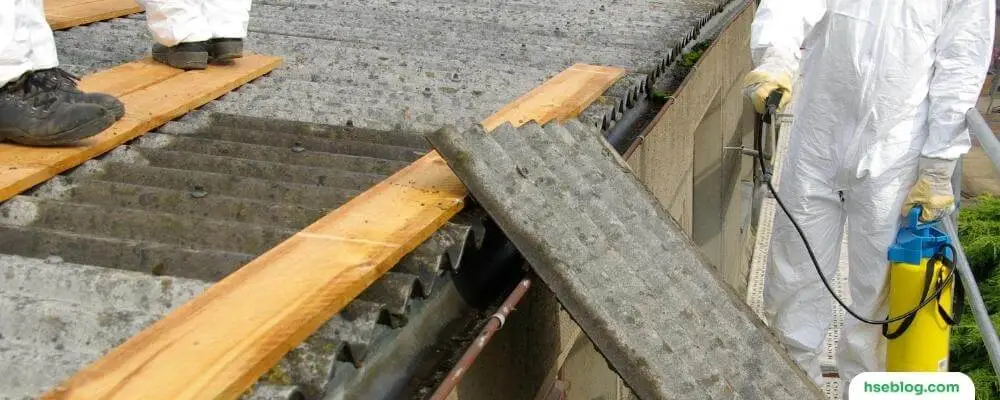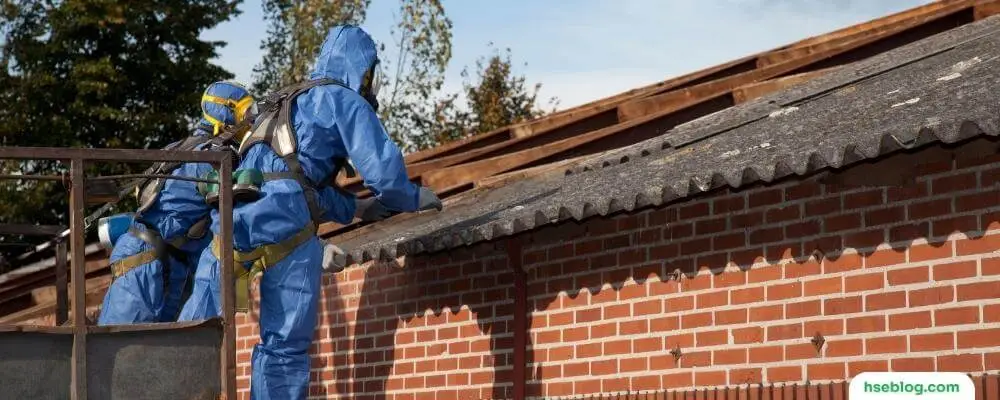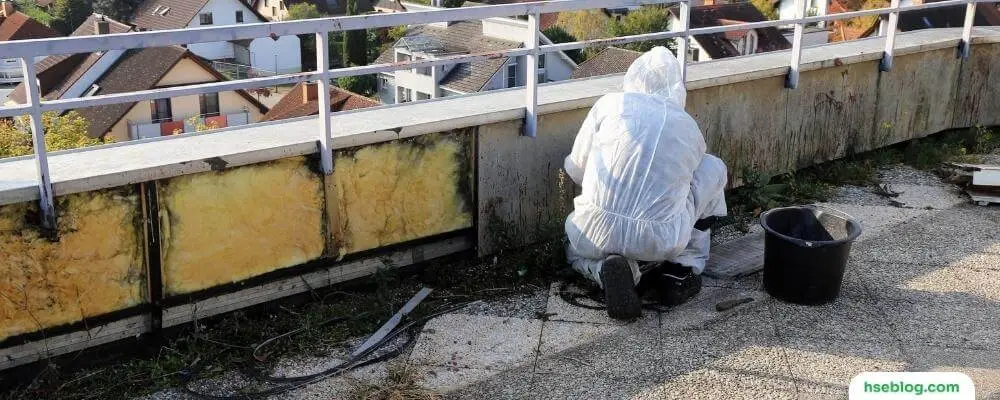Asbestos, a naturally occurring mineral, was once ubiquitous in various industries. Its attributes of being impervious to heat, electricity, and chemical damage made it an invaluable asset. However, the characteristics that once made asbestos a sought-after commodity have also made it a potent health hazard. When disturbed, asbestos releases fine fibers that, when inhaled, can lead to severe health issues such as mesothelioma, asbestosis, and lung cancer. This stark contrast between asbestos’s usefulness and harmful effects led to stringent regulations limiting its use.
As such, understanding how to work safely around asbestos is not just helpful but essential. The need for this knowledge isn’t limited to professionals in industries like construction or HVAC, where the risk of encountering asbestos might be more apparent. It’s crucial for everyone, as we can encounter asbestos in everyday locations like our homes or workplaces.
To help navigate these risks, this article will present 20 key safety tips for working with asbestos. These guidelines offer clear, practical advice to minimize exposure and protect your health while dealing with this potentially dangerous material.
Working Safely With Asbestos | 20 Asbestos Safety Tips
Working safely with asbestos is crucial to protect yourself and others from the harmful effects of this hazardous material. Here are 20 asbestos safety tips to follow:

1. Identify the Presence of Asbestos
The first step in managing the risk of asbestos is identifying its presence. Asbestos was used in many building materials before the 1980s, particularly in insulation, tiles, and pipe cement. It can still be found in many residential and commercial structures. A professional asbestos inspection involves taking small samples from the building materials and analyzing them in a lab to determine if they contain asbestos. If you suspect there’s asbestos but aren’t sure, always err on caution and assume it’s present. Treat the material as though it contains asbestos until a professional can confirm otherwise.
2. Education and Training
Knowledge is a powerful tool in preventing asbestos exposure. Workers who may encounter asbestos, such as those in construction, demolition, renovation, and maintenance, should receive comprehensive training. This education should cover the health risks associated with asbestos exposure, including asbestosis, lung cancer, and mesothelioma. Training should also detail the specific tasks that could disturb asbestos and release harmful fibers, such as cutting into walls or removing tiles. Finally, workers need instruction on safe work practices, such as using wet methods to suppress dust and properly using and disposing of personal protective equipment (PPE).
3. Follow Regulations and Guidelines
The Control of Asbestos Regulations provides a legal framework for managing asbestos risks in the UK, and similar regulations exist in other countries. These regulations stipulate that employers must identify and assess the risks of asbestos on their property, maintain an up-to-date asbestos register, and implement a detailed asbestos management plan. The plan must outline the necessary steps to manage the risks, including regular monitoring, encapsulation, or removal by a licensed professional. Following these laws keeps workers safe and helps employers avoid substantial fines and legal issues.
4. Use Appropriate Protective Equipment
PPE is vital for workers who will be disturbing asbestos-containing materials. A disposable FFP3 respirator is recommended for most tasks. These respirators are designed to filter out small particles, including asbestos fibers. Other important PPE includes disposable overalls to prevent fibers from sticking to clothing and boots without laces, as laces can trap asbestos fibers. Gloves should also be worn, and all PPE should be disposed of properly after use to avoid further contamination.

5. Avoid Disturbing Asbestos
Asbestos-containing materials that are intact and in good condition usually pose no risk, as the fibers are tightly bound in the material. However, when these materials are disturbed – drilling, sawing, scrubbing, or other activities – asbestos fibers can be released into the air. Once airborne, they can be easily inhaled and cause health problems. Therefore, always avoid disturbing suspected asbestos materials whenever possible. If these materials must be disturbed or removed, this should only be done by a trained and certified professional.
6. Use Proper Work Methods
Not every job involving asbestos requires the same approach. The appropriate work method depends on the nature of the job and the amount of asbestos present. As a general rule, you should strive to minimize the release of asbestos fibers. One effective method is wetting the material before disturbance, which helps suppress dust. It’s also crucial to avoid breaking materials into smaller pieces that can release more fibers. For example, rather than smashing a wall to remove it, carefully take it apart in large sections.
7. Properly Dispose of Asbestos Waste
Disposing of asbestos waste requires specific protocols to prevent environmental contamination. All asbestos-containing waste and materials contaminated with asbestos, such as PPE, should be placed in sealed, leak-tight containers. These containers should be clearly labeled as containing asbestos. Once sealed, the waste should be transported to an approved disposal facility that can handle hazardous waste. Never dispose of asbestos waste in regular trash bins or recycling bins.
8. Maintain Clean Work Areas
It’s critical to keep work areas clean when dealing with asbestos. Rather than dry sweeping or dusting – which can stir up dust and release more fibers – use wet rags or a specialized Type H (High hazard) vacuum cleaner designed for collecting fine dust and asbestos fibers. Clean all surfaces and equipment at the end of each work session, and never leave asbestos waste lying around.

9. Ensure Adequate Ventilation
Adequate ventilation can help disperse asbestos fibers, reducing the risk of inhaling a high concentration. However, while fresh air can help dilute the concentration of airborne fibers, it’s not a solution to prevent exposure entirely. Also, avoid using high-powered fans, which can cause dust to become airborne and spread throughout the area, increasing the risk of inhalation.
10. Health Monitoring
Workers exposed to asbestos should have regular health check-ups to detect any early signs of asbestos-related diseases. These diseases, such as asbestosis, lung cancer, and mesothelioma, often take many years to develop but can be fatal once they do. Regular check-ups allow for early detection and more effective treatment. Remember, using PPE does not eliminate the risk of asbestos exposure entirely, so even workers who consistently use PPE should be part of a health monitoring program.
11. Emergency Procedures
Unexpected situations can arise even in the best-managed work environments. For this reason, it’s critical to have emergency procedures in place should an unforeseen incident involving asbestos occur. Such procedures could include evacuation plans, first-aid procedures, and specific actions to take if asbestos-containing materials are accidentally disturbed. Equally important is training all workers on these procedures to ensure an immediate and effective response that minimizes further exposure and risk.
12. Regular Risk Assessments
Conducting regular risk assessments is a proactive approach to asbestos safety. These assessments should evaluate the work environment for potential asbestos exposure, verify that safety measures are being followed, and assess their effectiveness. Regular assessments can help identify new risks or changes in conditions that could lead to increased asbestos exposure, enabling the necessary modifications to safety protocols.

13. Don’t Eat, Drink or Smoke at the Work Site
Asbestos fibers are very small and easily stick to clothing, skin, and surfaces. Consequently, eating, drinking, or smoking in areas where asbestos may be present can lead to accidental ingestion or inhalation of these fibers. To avoid this, workers should take breaks in designated areas that are well away from asbestos work and have been confirmed to be contamination-free.
14. Use of Air Monitoring
Air monitoring is a crucial safety measure when working in an environment where asbestos is being disturbed. Regularly testing the air for asbestos fiber concentration provides valuable information on the effectiveness of safety measures and can warn of potential over-exposure before it becomes a significant health risk. The results from air monitoring can be used to adjust work practices, PPE use, and other safety procedures as necessary.
15. Use of HEPA Filters
High-Efficiency Particulate Air (HEPA) filters effectively capture small particles, including asbestos fibers. Using HEPA filters in vacuums used for cleanup and other ventilation equipment can significantly reduce the amount of asbestos remaining in the air after disturbance. It’s an effective additional measure to reduce the risk of asbestos inhalation.

Additional Safety Rules To Follow When Working With Asbestos
In addition to the already mentioned safety tips, there are several more rules that you should follow when working with asbestos to ensure safety:
- Clear Communication: Good communication is crucial in all areas of life, particularly when working with hazardous materials like asbestos. Clear and open lines of communication ensure that everyone on site knows the risks associated with asbestos and fully understands the safety procedures in place. Regular safety briefings, clear written procedures, and open-door policies for questions or concerns can all contribute to effective communication on the work site.
- Encapsulation and Sealing: In certain circumstances, removing asbestos may be unnecessary. In these cases, encapsulation or sealing can be a practical alternative. Encapsulation involves applying a sealant to the asbestos-containing materials, which binds the fibers together or coats them to reduce the release of fibers. As this process requires specific materials and techniques to be safe and effective, only trained and certified professionals should perform this task.
- Maintain Tools and Equipment: The tools and equipment used for asbestos work, including personal protective equipment (PPE), must be in good condition to provide the necessary protection. Regular inspections and maintenance are essential to ensure their effectiveness. For example, a respirator that is damaged or does not fit properly can allow asbestos fibers to be inhaled, increasing the risk of asbestos-related diseases.
- Decontamination Areas: Decontamination procedures are an important part of asbestos work safety. Designated decontamination areas should be set up for workers to safely remove and dispose of protective clothing and equipment. This reduces the chance of asbestos fibers being spread to other areas or taken home on workers’ clothing. Decontamination procedures should be followed every time workers leave the asbestos work area.
- Post Warning Signs: Warning signs are key in alerting workers and visitors to asbestos. These signs should be posted in all areas where asbestos is present or suspected, including work areas, storage areas, and waste disposal areas. Signs should be clear, easily understood, and compliant with local regulations. In many cases, they should include both text and universal symbols to ensure understanding regardless of language skills.
Conclusion
In conclusion, working safely with asbestos is paramount due to the severe health risks associated with exposure. By following the twenty asbestos safety tips outlined in this article, individuals can minimize the potential hazards and protect themselves and others from the harmful effects of asbestos. These safety guidelines provide a comprehensive framework for safely handling asbestos, from proper identification and assessment to using appropriate protective equipment, implementing effective work methods, and ensuring thorough decontamination. By prioritizing safety, we can mitigate the risks associated with asbestos and create a healthier and safer environment.

